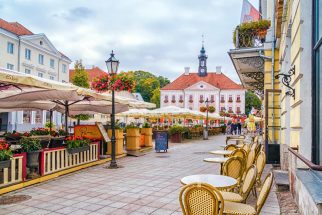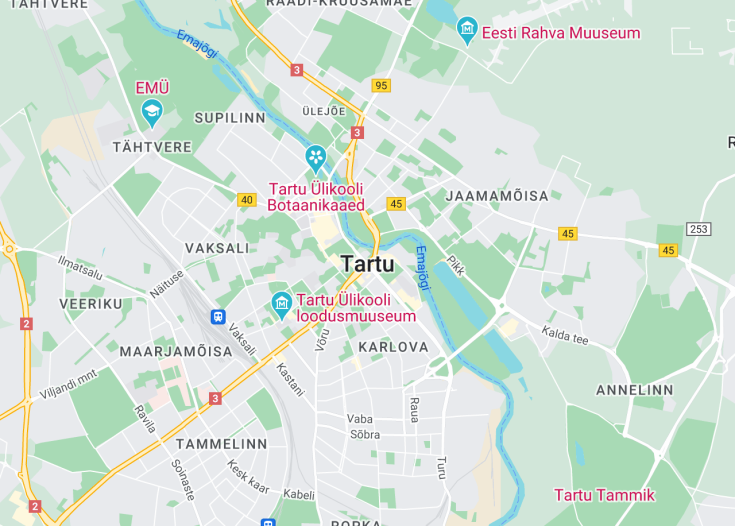Tartu is a charming city that offers a delightful tourist experience. With its rich history, vibrant culture, and beautiful architecture, it captivates visitors from around the world. Whether you’re interested in exploring historical landmarks, indulging in local cuisine, or immersing yourself in the city’s lively arts scene, Tartu has something for everyone.
If you want to fully experience Tartu, we suggest staying for at least three to four days. This timeframe allows you to explore the city’s main attractions, enjoy leisurely walks in the picturesque streets, and immerse yourself in the local culture.
When visiting Tartu, it’s essential to plan your itinerary strategically. The city has a well-connected public transportation system, including buses and trams, making it convenient to navigate. However, we recommend exploring the city on foot whenever possible. Tartu’s compact size and pedestrian-friendly streets make it a joy to stroll around, discovering hidden gems at every turn.
Top things to do & see in Tartu
Select the following sights and activities to discover best tickets and tours available in Tartu.
Tartu: A Hub of Culture and Education
| Country | Estonia |
| Time in Tartu | GMT+2 |
| Language spoken | Estonian |
| Population | 93,687 (Statistics Estonia, 2023) |
| Currency | Euro (€, EUR) |
| Airports | Tartu Airport (5 mi / 8 km). |
Tartu, the second-largest city in Estonia, is revered as a cultural and intellectual epicenter, largely due to the presence of the University of Tartu, founded in 1632. This city is often considered the intellectual heart of the country, contributing significantly to Estonia’s reputation with its high density of museums, galleries, and an array of festivals that showcase music, film, and literature. The city’s atmosphere is vibrant with youthful energy, partly because of its substantial student population, which infuses dynamism into its cafes, boutiques, and streets. Tartu’s Old Town is famous for its well-preserved historical architecture and the Town Hall Square, where a kissing statue symbolizes the city’s spirit of love and youth. The Emajõgi River running through the city adds a picturesque setting, which attracts locals and visitors to its banks for leisure and entertainment activities. In addition to its rich cultural life, Tartu is an important scientific hub, hosting many research institutions and technology companies, contributing to Estonia’s growing reputation in tech and innovation circles. Thus, Tartu is not just a historical gem but a contemporary beacon of knowledge, culture, and technology, making it a pivotal city in Estonia.
Where is Tartu?
Tartu is located in the southeastern part of Estonia, nestled between lakes and forested areas, enhancing its scenic beauty.
Distances:
| Route | Distance by car | Time by car |
|---|---|---|
| Tallinn to Tartu | 186 km | 2 hours 30 minutes |
| Pärnu to Tartu | 176 km | 2 hours 15 minutes |
| Narva to Tartu | 130 km | 1 hour 40 minutes |
What is Tartu famous for?
Tartu is renowned for its rich academic heritage, being home to the University of Tartu, which is one of the oldest in Northern Europe. It’s also famous for its vibrant cultural scene and historical architecture.
History
Prehistoric Era to Middle Ages
Tartu, located in the southeastern part of Estonia, has a diverse and rich history that dates back to the 5th century AD. Archaeological evidence suggests that the area was first inhabited by Finno-Ugric tribes, who engaged in fishing, hunting, and agriculture along the banks of the Emajõgi River. The strategic location of Tartu made it a central point of trade and a target for numerous invasions.
13th Century – 16th Century
The formal establishment of Tartu as a city dates back to 1030 when it was founded by Yaroslav the Wise of Kievan Rus. However, it was the German invaders in 1224 who significantly shaped its early development. The town was then named Dorpat and became a member of the Hanseatic League, playing an essential role in trade across Northern Europe. St. John’s Church and Tartu Cathedral, established during this era, highlight the city’s medieval architectural heritage.
17th Century – 19th Century
In the 17th century, Tartu came under Swedish control and saw the foundation of one of the oldest universities in Northern Europe, the University of Tartu, in 1632. The university became a vital cultural and educational center, influencing the intellectual landscape of the region. Following this, in the early 18th century, the city was absorbed into the Russian Empire, marking a period of cultural shifts and architectural advancements, including the construction of the classical main building of the University of Tartu.
20th Century to Present
The 20th century was tumultuous for Tartu, enduring both World Wars and Soviet occupation. Despite these challenges, the city preserved its academic and cultural legacy. Post-independence in 1991, Tartu has seen significant development and is now known as Estonia’s intellectual and cultural hub, showcasing a vibrant blend of historical and modern influences.
Visit Tartu
What to see and do in Tartu
Tartu offers a compelling mix of historical architecture, cultural institutions, and lively street scenes. Top attractions include walking through the charming Old Town, exploring the University of Tartul, and visiting the Estonia National Museum. The city’s vibrant arts scene can be experienced by attending performances at the Vanemuine Theatre or admiring contemporary art at the Tartu Art Museum.
- Explore the historic Old Town
- Visit the University of Tartu
- Attend performances at the Vanemuine Theatre
Annual events in Tartu
Tartu hosts several cultural and artistic events throughout the year. The Tartu Love Film Festival, held in August, and the Tartu Literary Festival, occurring in December, are highlights that attract visitors from across Europe. These events showcase the city’s rich cultural tapestry and vibrant community spirit.
Best time to visit Tartu
The best times to visit Tartu are during late spring or early autumn when the weather is pleasant, and the city’s parks and public spaces are at their most beautiful. Additionally, these seasons align with various local festivals and events, providing visitors with a glimpse into Tartu’s dynamic cultural scene.
Is Tartu worth visiting?
Tartu, with its blend of rich historical heritage and vibrant cultural life, offers a unique experience unlike any other Estonian city. However, visitors seeking bustling nightlife or extensive luxury shopping might find the city less appealing. Despite this, Tartu’s charm lies in its intellectual atmosphere, historic architecture, and the warmth of its community, making it a worthwhile destination for those interested in history, culture, and academic pursuits.

















